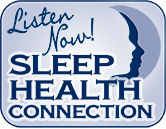Do You Experience Chronic Headaches?
Dental Sleep and TMD Center of Illinois is dedicated to relieving pain and suffering from patients experiencing complex symptoms of TMD (temporomandibular Joint Dysfunction) and chronic headaches. Signs and symptoms of temporomandibular joint disorder vary in their presentation and can be very complex. Often the symptoms will involve more than one of the numerous TMJ components: muscles, joints, nerves and the teeth.
What are some of the TMD/Migraine headaches symptoms you should be looking for?
- Pain around the Ears
- Jaw, Tooth, Face, Neck and/or Should Pain
- Clicking or Popping of the Jaw
- Grinding of the Teeth
- Ringing or Fullness in the Ears
- Migraine Headaches or any other type of Headaches
- Sinus Pressure and Lack of Draining
There are 236 types of headaches. The large majority of these headaches have a jaw joint or muscle component. Our treatments reduce the excitability of specific cranial nerves. By lowering this threshold the likelihood and intensity of mirgraines or headaches are diminished.
Is TMD Curable?
Although TMD can become a chronic problem associated with permenant damage from trauma to the head, neck or TMD joint, the symptoms can be eliminated through proper professional care. The objective of our treatment is to gently and naturally bring the head, neck, jaw and bite into neuromuscular alignment. In other words, the head literally teeters on the top of the cervical spine with the center of gravity forward to the spine. It is tethered to the body by muscles of the joint systems. Functional and resting head posture is dependant upon the proper tension in these muscles. Movement of the jaw is not only related to the muscles for chewing, but also head and neck position.
Here’s what is involved in our TMD treatment process:
A thorough evaluation and patient history, then a physical examination to discover the muscle hot spots or trigger points. We will perform a bite evaluation using computerized equipment. Then we use a series of office treatments including state of the art equipment and massage therapy. Also included will be very important take home instruments to help you manage and divert early signs of headaches and migraines.
Our goal is to help you be pain free and improve the quality of your life!
If you have any further questions, or would like to schedule an appointment to meet our team and get started living pain free, please feel free to contact our TMD Director, Cathy, at 630-369-5508.








(630) 369-5508